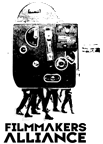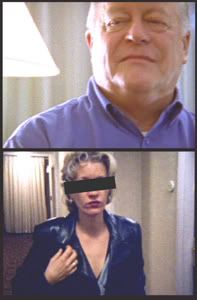Sundance: Five ways to survive
Park City bizmeisters to filmmakers: adapt or die
By ANTHONY KAUFMAN
(reprinted from Variety.com)
Now that the indie finance model has collapsed and foreign presales and hedge funds have dried up, helmers have had to get creative, innovating new ways of survival, everything from slashing budgets to cultivating well-heeled allies and tapping crowd-funding websites.
Now that the indie finance model has collapsed and foreign presales and hedge funds have dried up, helmers have had to get creative, innovating new ways of survival, everything from slashing budgets to cultivating well-heeled allies and tapping crowd-funding websites.
Sundance director of programming Trevor Groth notes one of the obvious shifts at the Fest this year is that the high-profile Premieres section "has fewer films with distribution in place than it ever has."
On the opposite end of the spectrum, Groth points to the festival's new Next section, devoted to low- and no-budget filmmaking. "I believe the films represent the true innovation in American independent filmmaking. And they don't look like low-budget films," he adds. "They give me encouragement about where we are right now."
From independently financed star-studded entries to micro-budget indies, then, here are the new paradigms.
1. The Agency-Backed Package
Back when distribs were snatching up indies at seven-figure prices, helmers could afford to cast stars and spend a small fortune on the production, though it was hard to package such a project without the aid of a tenpercentery. While the agency-supported Sundance indie (i.e. this year's "My Idiot Brother," "Margin Call," "Salvation Boulevard," "The Details") may be a continuation of the industry's earlier model, the changing nature of Hollywood is impacting the way these films are made today -- and maybe for the good, according to Rena Ronson, co-head of UTA's Indie Film Group.
"What's been better for us is that we're able to access material that's often well-developed, coming into turnaround from the studios, or writer-directors with projects that the studios don't want to make," she says. "And financiers are not shying away from good movies with reasonable budgets that they believe can be successful, such as 'The Kids Are All Right,' 'Blue Valentine' or 'The Fighter.'?"
While the budgets of such pics may be scaling down -- "Maybe you get it financed for $8 million rather than $20 million," says one producer -- the money is out there if the package is right.
2. The Microbudget Indie
Instead of chasing those big distribution deals of the past, many helmers are scaling back their projects to match the size of their anticipated audience. Take prolific no-budget director Joe Swanberg, who made five features last year and co-directed a sixth: Swanberg says his latest Sundance entry "Uncle Kent" (recently acquired by VOD label Sundance Selects) was made in the same way as his first two.
"Everyone worked for free, we used locations we had easy access to and we told a story that we could fully explore within our means," he says. "If one of the films doesn't sell, it's not a huge loss, and if one of the films is an unexpected commercial success, it will cover all of the others."
The times may be nigh for the low-budget indie drama, but there's still no shortage of such films (see the 16 in dramatic competition). How are they getting made today?
"For 50% less," says "Blue Valentine" producer Jamie Patricof, who stewarded Elgin James' lower-budget entry "Little Birds" this year. "And on top of it, you need bigger stars."
Producer Lynette Howell says competition entry "On the Ice" (which has a cast of unknowns and was made by a first-time-director) forced her and partner Cara Marcous to undertake "the most creative financing I've ever done, with tiny bits and pieces from all over the place," ranging from Alaska's generous tax credit to five equity investors and grants from eight different organizations.
"The key thing in getting the movie made," says i ndustry vet Ted Hope, an executive producer on Sean Durkin's "Martha Marcy May Marlene," "was (Durkin's company) Borderline's gumption and tenacity. They set a date and went for it, proving the adage that the best time to raise money is when you are already shooting."
Likewise, Seattle-based producer Lacey Levitt says she had been trying to make "The Off Hours," a Next selection, for several years, but rather than slog it out with agencies or bigger production companies, "it just came to a point where we said, 'The time has come. We're setting the date,'?" she recalls.
3. The High-Concept, Low-Cost Genre Movie
From "The Blair Witch Project" to "Paranormal Activity," one of the most enduring areas in the business is the low-budget genre film, allowing creative helmers to create scary scenarios without spending a lot of money. And now that HD cameras and over-the-counter vfx software have caught up with professional equipment, it's possible for guys like "Monsters" helmer Gareth Edwards to show the monsters, making polished films for roughly the cost of a small car.
Less visually demanding was Mike Cahill's dramatic competition entry "Another Earth," which casts an intimate human drama against the backdrop of a sci-fi premise in which scientists discover a planet that mirrors our own.
But even though such films can be an excellent showcase for up-and-coming directors, there's a glut of genre titles today, making even them a risky bet.
Todd Rohal, director of the horror-ish comedy "The Catechism Cataclysm," struggled to get financing from New York producers, and only got the movie made with the beneficence of David Gordon Green's indie-friendly Hollywood-based Rough House shingle and $9,310 in Kickstarter donations. "It became very frustrating," says Rohal.
Michael Tully admits the investors he assembled to make his genre-bending oddity "Septien" agreed to finance the film "with the full understanding that they would never see one dollar in return," he says.
4. The Government Subsidized Overseas Project
Indeed, if American filmmakers must survive in the most cutthroat of capitalist markets, the foreign (and particularly marketable Canadian, British and Australian) filmmakers going to Sundance this year enjoy the benefits of local subsidies and national funding orgs.
Scottish auteur David Mackenzie ("Young Adam"), for example, returns to Sundance this year with the $6.4 million "Perfect Sense," funded via a slew of private and public entities (BBC Films, Zentropa, Danish Film Institute, Trustnordisk, Creative Scotland, FilmIvast, Irish Film Board.)
Likewise, Oscar winner James Marsh's new documentary "Project Nim" got financed through the BBC and the U.K. Film Council. "We were lucky to have such willing and enthusiastic partners," says "Nim" producer Simon Chinn.
5. The On-Demand Alternative
Then there are the filmmakers who know no boundaries. Enabled by digital distribution avenues, they are cognizant about the changing habits of consumers.
"How are most people going to see a small indie film?" asks Next section director Zal Batmanglij ("Sound of My Voice"). "They're going to see it on their laptop and TV, and it's naive not to acknowledge that." With that in mind, Batmanglij says he structured the film with mini-cliffhangers interspersed throughout so it could be divided up into a series of episodes online or screened as a whole in theaters. "Why can't you do all of the above?" he says.
Tiffany Shlain, the director of documentary competition pic "Connected" (and the founder of the Webby Awards), concurs.
"I don't think people aren't going to want to experience films in a theater," says Shlain, who plans to release her film on multiple platforms. "But there are all these other new amazing ways for people to experience a movie and directors to have contact with people who enjoy their film."
"Shut Up Little Man" producer Sophie Hyde says the documentary, which follows the rantings of two unlikely roommates who were recorded on cassette tapes, which were then distributed and shared like trading cards, "shows us not just how culture can 'go viral,' but why." She expects the film's distribution will follow a similar pattern: "We think many people will experience it via digital platforms that are essentially file-sharing tools."
Whatever the ways forward in this post-Indiewood epoch, the industry appears to be newly energized going into this year's festival.
"Specialty movies are doing so well at the box office right now," says "Terri" producer Alex Orlovsky says. "Originality is being rewarded."
















